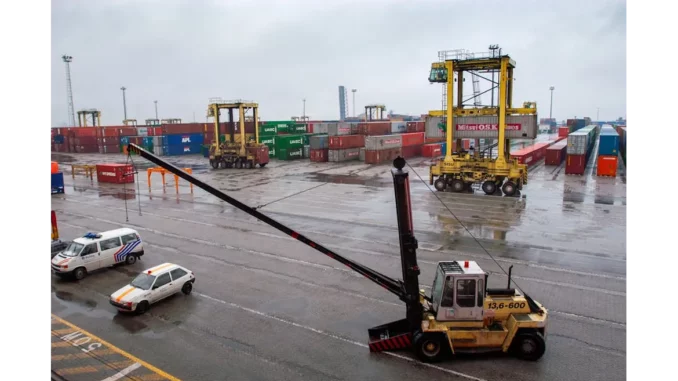
Summary
Stacker Crane Market to Double by 2032 Amid Rising Automation Demand
The stacker crane market is on the cusp of a transformative decade, with projections indicating a near doubling in size from USD 6.34 billion in 2022 to USD 12.3 billion by 2032. This impressive growth, marked by a compound annual growth rate (CAGR) of 6.85%, is primarily fuelled by a surge in automation across global industries. As e-commerce expands and Industry 4.0 initiatives accelerate, stacker cranes are becoming integral to automated storage and retrieval systems (AS/RS), offering solutions that maximise efficiency and minimise labour dependency. Industry leaders highlight the critical role of technological advancements and strategic innovations in this evolving landscape.
Main Article
The stacker crane market is experiencing a significant evolution as industries worldwide increasingly adopt automation to improve operational efficiency and reduce reliance on human labour. Stacker cranes, crucial to automated storage and retrieval systems, are gaining traction as businesses strive for optimised storage solutions. “The push towards automation is not just a trend; it’s a necessity,” says Mark Bailey, an industry analyst at TechInsights. “The growth in e-commerce and the drive towards smarter warehouses are catalysing this market expansion.”
Market Dynamics and Growth Drivers
As of 2022, the stacker crane market was valued at approximately USD 6.34 billion, with expectations to reach USD 12.3 billion by 2032. This growth is driven by several key factors, including the explosive rise of e-commerce, which demands faster, more efficient order fulfilment processes. Stacker cranes provide an effective means to utilise vertical and horizontal storage, enabling warehouses to store more goods within a smaller physical footprint. Furthermore, the persistent labour shortages across many sectors have accelerated the adoption of automated systems, as companies seek to maintain productivity without increasing workforce dependency.
Technological Advancements
The industry is shifting from traditional models to advanced, digital-enabled stacker cranes. These modern systems feature enhanced energy efficiency, robust safety protocols, and precise control operations. The integration of digital twin technology and IoT systems is becoming prevalent, offering predictive maintenance capabilities and optimised performance. According to industry experts, such digitalisation reduces maintenance costs and minimises downtime, thus improving the return on investment for businesses adopting these technologies.
In addition, advancements in artificial intelligence and machine learning are significantly boosting the capabilities of stacker cranes. These technologies allow cranes to function more autonomously and adapt fluidly to dynamic warehouse environments. This enables real-time tracking and enhanced operational visibility, streamlining inventory management and boosting throughput efficiency.
Strategic Advancements and Market Segmentation
A notable characteristic of the stacker crane market is its strategic advancements aimed at product diversification and market expansion. Companies are developing tailored, scalable solutions to meet the specific needs of different sectors. The market is segmented into single-column and double-column cranes, each with distinct benefits in terms of speed, flexibility, and load capacity. Single-column cranes are optimal for lighter, quicker operations, while double-column cranes are designed for heavier loads, often utilised in high-density storage contexts.
The stacker crane industry serves a variety of sectors, including automotive, pharmaceuticals, electronics, food and beverage, and retail. For instance, in the food and beverage industry, stacker cranes are valued for their temperature control capabilities essential for perishable goods, while in electronics, precision and speed are crucial for managing delicate components.
Regional Analysis
Regionally, the Asia-Pacific market leads the global stacker crane industry due to its dense manufacturing base and rapid e-commerce growth, particularly in countries like China, Japan, and South Korea. North America follows closely, with the United States at the forefront due to its advanced logistics infrastructure and a high adoption rate of automation technologies. Europe also remains a significant player, with countries such as Germany and the Netherlands prioritising automation to comply with stringent safety and efficiency regulations.
Detailed Analysis
Despite its promising outlook, the stacker crane market faces challenges, including substantial initial investment costs and integration complexities, particularly for small and medium-sized enterprises. Nonetheless, the long-term advantages of automated systems—such as increased accuracy, reduced operational costs, and improved customer satisfaction—are compelling businesses to invest. Opportunities for growth are particularly strong in emerging markets, where industrial automation is still developing. As industries continue to modernise, the demand for stacker cranes is expected to rise, offering lucrative prospects for market participants to expand their reach and leverage the ongoing automation trend.
Further Development
As the stacker crane market continues to evolve, stakeholders are closely monitoring technological breakthroughs and strategic partnerships that could redefine industry standards. Future updates are expected to focus on the integration of AI and IoT, enhancing the capabilities of stacker cranes in real-time operations. Additionally, regulatory changes and economic shifts may impact market dynamics, providing further areas of interest for ongoing coverage. Readers are encouraged to stay informed as this sector progresses, with more in-depth analysis and expert insights forthcoming.

